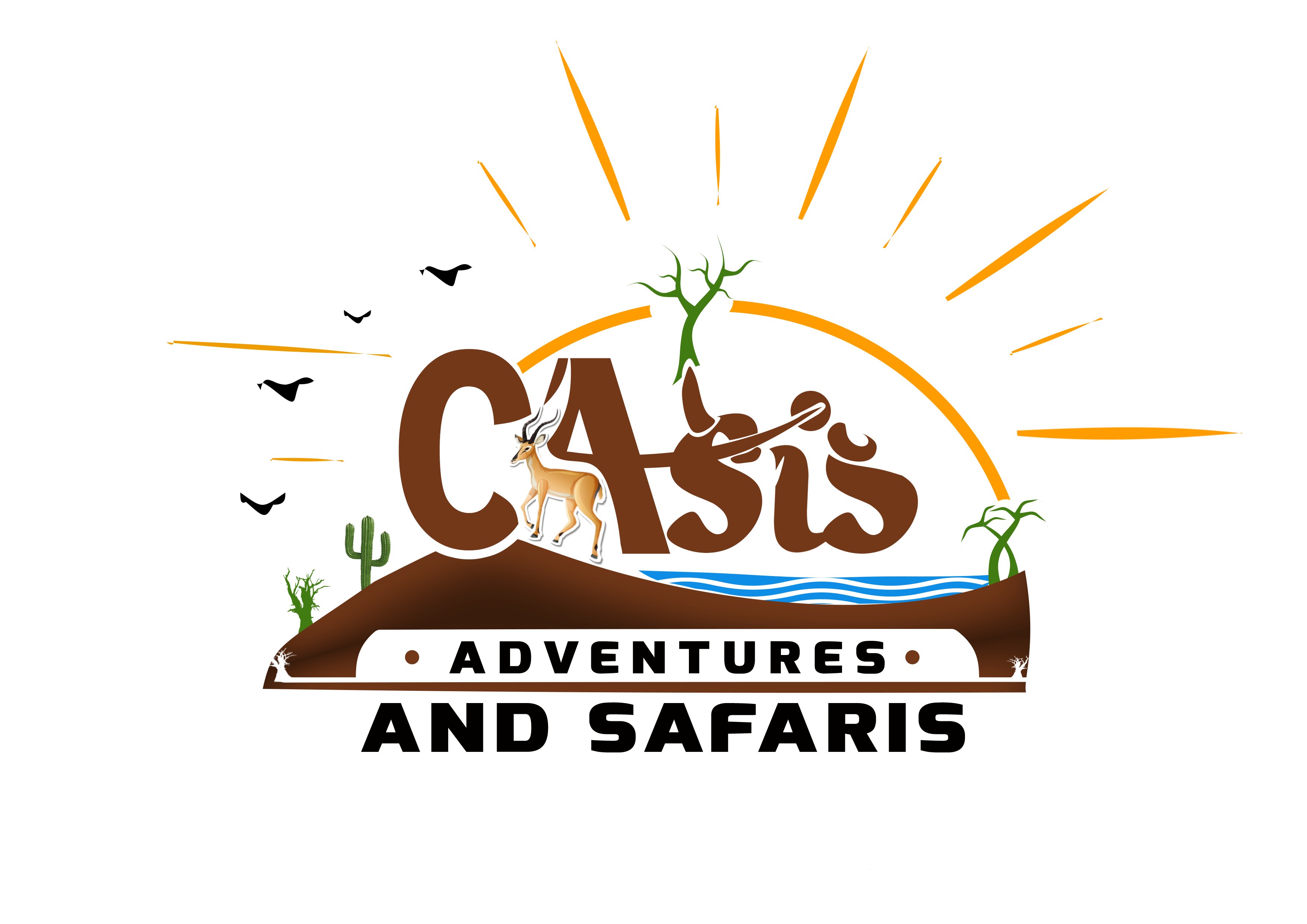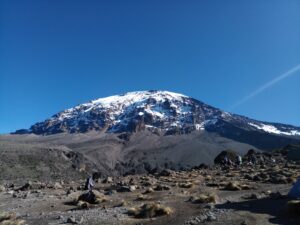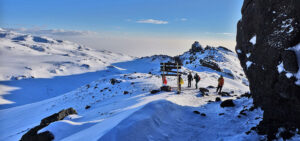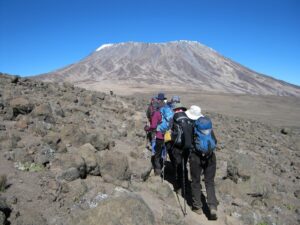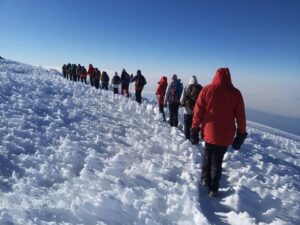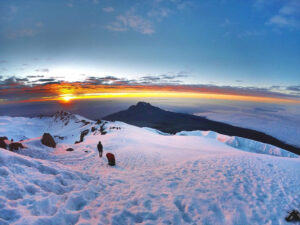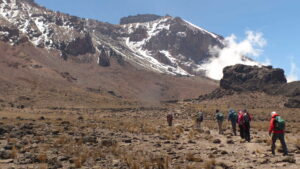Kilimanjaro national park
kilimanjaro national park
Kilimanjaro National Park is a stunning protected area in Tanzania that is home to Mount Kilimanjaro, the highest peak in Africa, standing at 5,895 meters (19,341 feet) above sea level. The park was established in 1973 to protect the natural habitats and wildlife of the region. With an area of 1,688 square kilometers, the park is a popular destination for trekking and hiking enthusiasts who are drawn to the challenge of climbing the majestic peak.
Mount Kilimanjaro is composed of three distinct volcanic cones: Shira, Mawenzi, and Kibo. Uhuru Peak, the highest point on the mountain, is located on the Kibo cone. Kilimanjaro is one of the Seven Summits, a group of the highest mountains on each of the seven continents. Climbing Kilimanjaro is a once-in-a-lifetime experience that requires no technical skills but does require a good level of fitness and stamina.
Kilimanjaro National Park is known for its diverse range of flora and fauna. The park is home to over 140 species of mammals, including elephants, buffalos, leopards, and several species of primates, such as the black-and-white colobus monkey, the blue monkey, and the olive baboon. There are also over 180 species of birds found in the park, including several endemic species such as the Kilimanjaro Weaver and the scarlet-tufted Malachite Sunbird. The park is also home to several reptile species, including chameleons, geckos, and snakes.
The park has several trekking routes that lead to the summit of Mount Kilimanjaro, each with its own unique scenic views and wildlife encounters. The most popular routes include the Machame Route, Lemosho Route, Marangu Route, and Rongai Route. Each of these routes offers its own set of challenges and rewards, and trekkers should choose the route that best suits their fitness level and preferences.
Wildlife
The park is home to over 140 species of mammals, including some of the iconic African animals such as elephants, buffalos, and lions. Other mammal species found in the park include leopards, hyenas, wild dogs, bushbucks, elands, and several species of primates such as the black-and-white colobus monkey, the blue monkey, and the olive baboon.
The park is also home to a wide variety of birds, with over 180 species recorded so far. The birdlife in the park is diverse and includes several endemic species such as the Kilimanjaro Weaver and the scarlet-tufted Malachite Sunbird. Other bird species found in the park include eagles, vultures, owls, hornbills, and several species of passerines.
The reptile fauna in Kilimanjaro National Park is also impressive, with several species of lizards, chameleons, geckos, and snakes. The most common snake species in the park is the Black Mamba, which is highly venomous and can be dangerous if encountered.
The park’s wildlife is distributed across the various ecological zones on the mountain, which include the montane forest, heath, moorland, alpine desert, and summit glacier. Each of these zones has its own set of wildlife species that are adapted to the specific conditions found in that zone.
The montane forest is the most biodiverse zone on the mountain and is home to several species of primates such as the black-and-white colobus monkey and the blue monkey. The forest is also home to several bird species such as the Hartlaub’s Turaco and the Silvery-cheeked Hornbill.
The heath zone is characterized by low shrubs and grasses and is home to several mammal species such as the bushbuck and the eland. The heath is also an important habitat for several bird species such as the Long-tailed Fiscal and the Red-billed Chough.
The moorland zone is characterized by high-altitude grasslands and is home to several mammal species such as the buffalo and the hyena. The moorland is also an important habitat for several bird species such as the Alpine Chat and the African Crowned Eagle.
The alpine desert zone is a harsh environment that is characterized by rocky terrain and low vegetation. This zone is home to several reptile species such as the chameleon and the gecko. The zone is also an important habitat for several bird species such as the Lammergeier and the Rufous-tailed Rock Thrush.
Ecosystems
The park can be divided into five distinct ecological zones: the montane forest, heath, moorland, alpine desert, and summit glacier. Each zone has its own unique set of flora and fauna, as well as its own climatic conditions.
The montane forest zone is the most biodiverse ecosystem on the mountain, with lush vegetation that is home to several species of trees, shrubs, and epiphytes. This zone is characterized by cool and wet conditions, with average temperatures ranging from 10°C to 20°C. The montane forest is home to several mammal species, including the black and white colobus monkey, blue monkey, and elephants. The forest is also an important habitat for several bird species such as the Hartlaub’s Turaco and the Silvery-cheeked Hornbill.
The heath zone is characterized by low shrubs and grasses and is situated above the montane forest. This zone has a drier climate than the montane forest, with average temperatures ranging from 10°C to 20°C. The heath is home to several mammal species, including the eland, bushbuck, and several smaller antelope species. The heath is also an important habitat for several bird species such as the Long-tailed Fiscal and the Red-billed Chough.
The moorland zone is located above the heath and is characterized by high-altitude grasslands. This zone is characterized by cool and dry conditions, with average temperatures ranging from 0°C to 15°C. The moorland is home to several mammal species, including the buffalo and the hyena. The moorland is also an important habitat for several bird species such as the Alpine Chat and the African Crowned Eagle.
The alpine desert zone is situated above the moorland and is characterized by rocky terrain and low vegetation. This zone has a harsh climate, with average temperatures ranging from -10°C to 10°C. The alpine desert is home to several reptile species, including chameleons and geckos. The zone is also an important habitat for several bird species such as the Lammergeier and the Rufous-tailed Rock Thrush.
The summit glacier zone is the highest zone on the mountain and is characterized by permanent ice and snow. This zone has a frigid climate, with average temperatures ranging from -15°C to -5°C. The summit glacier is home to several bird species such as the Snow Petrel and the Alpine Swift.
Trekking
Trekking in Kilimanjaro is a unique experience as it offers a range of terrains and ecosystems to explore, from lush forests to rocky trails and snow-covered slopes. There are several routes that one can take to reach the summit, each offering a different set of challenges and rewards.
One of the most popular routes is the Machame Route, which is also known as the “Whiskey Route”. This route is known for its steep ascents and descents and requires a high level of fitness and endurance. However, the Machame Route also offers some of the most spectacular views of the mountain and its surroundings.
Another popular route is the Marangu Route, also known as the “Coca-Cola Route”. This route is considered the easiest of all the routes, with gentle slopes and well-maintained trails. The Marangu Route is a popular choice for beginners or those who want a more relaxed trekking experience.
Other routes include the Lemosho Route, the Rongai Route, and the Umbwe Route, each offering its own unique set of challenges and rewards.
Trekking in Kilimanjaro requires proper preparation and planning, including getting the necessary permits, gear, and hiring a licensed guide. The park authority requires that all trekkers be accompanied by a licensed guide to ensure their safety and minimize the impact on the environment.
Acclimatization is also an essential part of trekking in Kilimanjaro, as the high altitude can cause altitude sickness, which can be life-threatening. It is recommended that trekkers take their time and acclimatize properly by spending a few days at the lower elevations before attempting to reach the summit.
Planning to visit.
What travellers most enjoyed about Tanzania
Scenery
Beaches
Wildbeest Migration
Wildlife and safaris
Private Concessions And Conservancies
HOT AIR BALOONING
MOBILE CAMPING
CALTURAL INTERACTION
Climbing Kilimanjaro
The Ultimate Summit Experience
Kilimanjaro National Park, located in Tanzania, is a must-visit destination for trekking enthusiasts seeking a challenging climb to the summit of Mount Kilimanjaro, the highest peak in Africa. The park’s diverse flora and fauna, which includes over 140 mammal and 180 bird species, make it a popular destination for nature lovers. The park’s various trekking routes, such as the Machame Route, Rongai Route, and Lemosho Route, provide unique wildlife encounters and scenic views for visitors. Kilimanjaro National Park offers a truly unforgettable trekking experience for adventurous travelers looking to explore the natural beauty of Tanzania.
